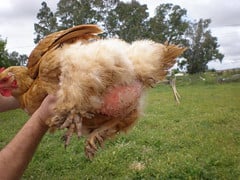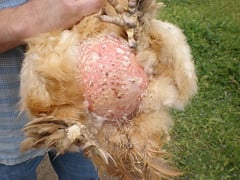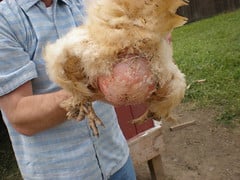- May 9, 2010
- 2
- 0
- 7
Hi all, first post here and hoping someone can help us with our chicken
My year old chicken (unknown breed, bought at Tractor supply as a chick) has developed a swollen area under her vent. The area has lost all of the feathers and is causing her to waddle. She was very lethargic for a few days but seems better now, even though the swelling has persisted. Some 4H friends said they thought it was coccidosis, but she has never had bloody excrement and the condition has persisted for over a month. Here are some Pics



Any help would be great!
My year old chicken (unknown breed, bought at Tractor supply as a chick) has developed a swollen area under her vent. The area has lost all of the feathers and is causing her to waddle. She was very lethargic for a few days but seems better now, even though the swelling has persisted. Some 4H friends said they thought it was coccidosis, but she has never had bloody excrement and the condition has persisted for over a month. Here are some Pics



Any help would be great!



